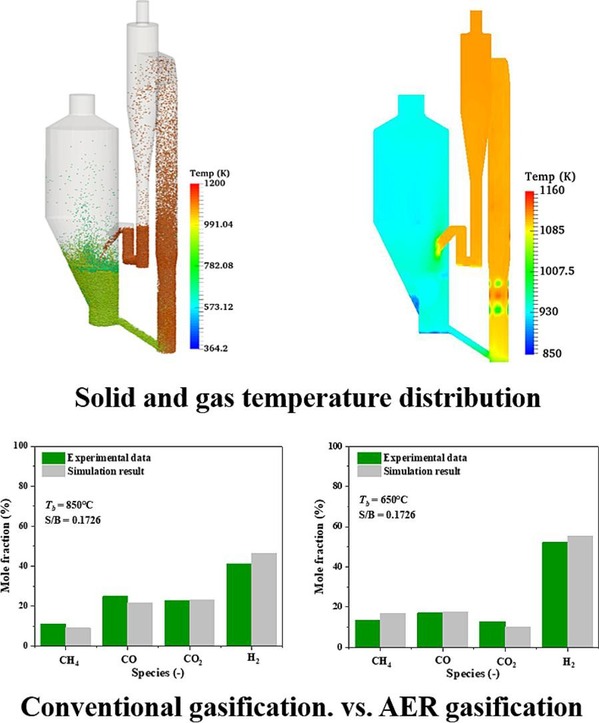Biomass gasification combined with CO2 absorption enhanced reforming (AER) emerges as a clean and efficient technology for H2 enrichment and CO2 removal, yet an in-depth understanding of in-furnace phenomena and fundamental physics is still lacking.
Recently, Professor Kun Luo, from State Key Laboratory of Clean Energy Utilization, Zhejiang University, and Shanghai Institute for Advanced Study of Zhejiang University, and colleagues numerically studied the AER gasification in an industrial-scale DFB reactor by integrating the multi-phase particle-in-cell (MP-PIC) framework with complex reaction kinetics regarding gasification, carbonation, and calcination. They found that bubble dynamics was correlated with thermochemical properties, and the AER gasification promoted H2 concentration but reduced CO2 concentration. Higher temperature and higher S/B ratio benefited the ARE gasification and the best performance was achieved when the bed material with olivine: calcined calcite = 1:3.

In the MP-PIC approach, the solution of the transport equation of a particle distribution function (PDF) is used to denote particle dynamics while Navier-Stokes equations are adopted to describe gas motions. A shrink core model is used to describe the variation in particle diameter caused by heterogeneous reactions. After model validations, the effects of several key operating parameters on the AER gasification performance were studied. As compared with conventional gasification, AER gasification promoted H2 concentration by 15.3% but reduced CO2 concentration by 55.8%, leading to syngas quality improvement. Moreover, AER gasification performance in the DFB reactor can be improved by: (i) increasing gasification temperature; (ii) increasing steam-to-biomass ratio; (iii) adjusting bed material and (iv) decreasing particle size. The present work provides a cost-effective tool to study the physical-thermal-chemical behaviors of AER gasification in industrial-scale DFB reactors.
The work was published in Chemical Engineering Journal, and could be accessed at https://www.sciencedirect.com/science/article/pii/S1385894723017126.

